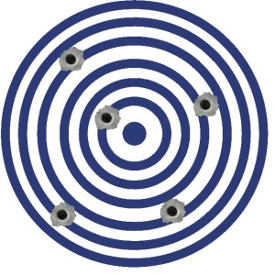
Every now and then when I'm reading an article from the world of behavioral economics discussing a particular phenomenon, it makes you realize once again how much trading and investing is about human behavior.
And to be successful in trading and investing, you have to be able to anticipate human behavior in order to take decisions at an early stage before the anticipated behavior becomes reality. But as a trader and investor, you also have to acknowledge your own human behavior and how that could potentially influence your decision-making. A theory that I came across a while ago is the Texas Sharpshooter fallacy.
The article on Wikipedia is worth reading of course. From that article: The name comes from a joke about a Texan who fires some gunshots at the side of a barn, then paints a target centered on the tightest cluster of hits, and claims to be a sharpshooter. What a great way to explain in short what this is about! As discussed in other posts on this blog, we humans (in fact all animals) like to see patterns, like to see cause and effect relationships.
The Texas sharpshooter fallacy easily translates to the trading situation. Some traders use an overwhelming amount of indicators to determine market tops and bottoms. When some very nice examples of very obvious tops and bottoms seem to line up with what a particular indicator anticipated, then that indicator looks good. What traders sometimes tend to overlook are all occurrences with less obvious tops and bottoms with false indicator signals. Or maybe another indicator now made the right call, where it previously did not. It's tempting to sort of silently switch between the available indicators and pick the one that was right for a particular moment in time, looking back.
Or what about the ever-looming fallacy of curve fitting? Shifting the period of a moving average just so that it acts as support and resistance. At least, that's what it looks like.
But there are many other ways traders sometimes tend to paint a target centered on the tightest cluster of positive indicator signals.